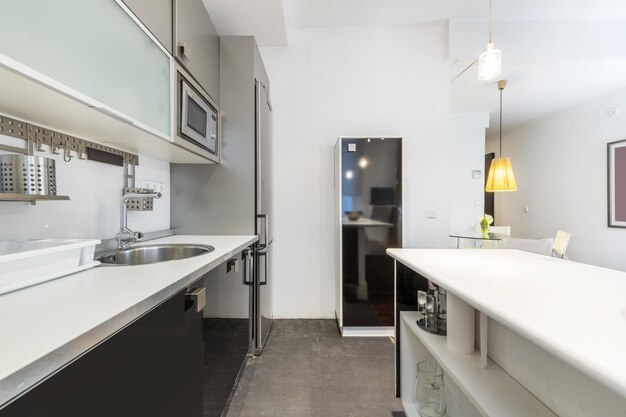How Much Energy Does Your Refrigerator Really Use?
Envision this scenario: every time you open your refrigerator door, you're not just reaching for a snack; you're engaging with one of the biggest energy consumers in your home. Refrigerators are essential, but do you know how much energy they use? Understanding this can not only promote energy efficiency but also save money on your electricity bills. Let's dig into the ins and outs of refrigerator energy consumption, from how many watts they use to ways you can improve their efficiency.
Understanding Refrigerator Wattage
Wattage is a fundamental term when discussing energy efficiency. It's a measure of how much electricity an appliance uses. When it comes to refrigerators, the wattage can fluctuate throughout the day. But what's the average?
Typical Wattage Galore
- Standard refrigerators tend to use between 100 to 800 watts.
- Energy-efficient models might only require around 100 to 400 watts.
Why such a range? The variance is due to factors like size, model, and age, as well as features like built-in freezers or ice dispensers.
How to Calculate Energy Use
To calculate how much energy your fridge consumes, you can use the formula:
[ ext{Energy Consumption (kWh)} = frac{ ext{Wattage} imes ext{Hours Per Day}}{1000} ]
For example, if your refrigerator has a wattage of 200 and runs 24 hours a day, it uses 4.8 kWh daily.
Factors Affecting Refrigerator Energy Consumption
While wattage gives a basic idea about energy use, several other factors can significantly influence how much electricity your refrigerator actually consumes.
1. Size and Capacity
Larger models with more storage generally consume more power. However, overstuffing any size fridge forces it to work harder to maintain the internal temperature.
2. Age and Model
Older refrigerators tend to be less energy-efficient. In contrast, modern models are designed with energy conservation in mind, often featuring improved insulation and more efficient compressors.
3. Location and Ambient Temperature
Where you place your refrigerator plays a role too. If it’s situated next to a stove or in a sunny spot, it will consume more energy to keep cool.
4. Temperature Settings
If the thermostat is set too low, the appliance will work harder, increasing energy usage. Keeping the refrigerator at the factory-recommended settings can help optimize energy use.
Improving Refrigerator Efficiency
Small changes can lead to big energy savings. Here's how you can improve your fridge's efficiency:
Optimize Temperature Settings 🌡️
- Aim for a refrigerator temperature of about 37°F (3°C).
- Freezer compartments should be set around 0°F (-18°C).
Regular Maintenance 🛠️
- Clean the condenser coils twice a year.
- Ensure door seals are tight. Faulty seals can let cold air out, wasting energy.
Strategic Placement 🚪
- Keep it away from heat sources like ovens or direct sunlight.
- Make sure there's adequate space for ventilation around the appliance.
Mindful Use 🧊
- Cool hot foods before placing them inside.
- Limit how long you keep the door open.
Comparing Energy Costs
Understanding the energy consumption and subsequent costs involves not just wattage but also kilowatt-hour (kWh) pricing. Here's a simplified example to illustrate your potential monthly expenses:
| Appliance Type | Average Wattage | Hours Per Day | Daily kWh | Monthly kWh | Cost @$0.12/kWh |
|---|---|---|---|---|---|
| Standard Fridge | 180 | 24 | 4.32 | 129.6 | $15.55 |
| Energy-Efficient | 120 | 24 | 2.88 | 86.4 | $10.37 |
A reduction like this emphasizes the savings a modern, efficient refrigerator can offer.
The Role of Technology in Enhancing Efficiency
The leap towards smarter kitchens is on the horizon, with technology driving appliances into the digital age. Smart refrigerators are equipped with features like:
1. Advanced Sensors
They detect temperature fluctuations, adjusting settings automatically to save energy.
2. Digital Displays
These provide real-time energy consumption data, helping you to analyze and optimize usage.
3. Remote Controls
Monitor and control your fridge via smartphone apps even when you're not at home.
Practical Consumer Tips 📋
Achieving energy efficiency requires mindful habits and thoughtful upgrades. Here are some condensed tips to help you reduce your refrigerator's energy consumption:
- 📉 Monitor Energy Use: Consider using an electricity usage monitor for real-time data.
- 🤝 Opt for Energy Star: These certified models consume less energy.
- 🧹 Keep It Clean: Regularly defrost manual-defrost freezers for optimal efficiency.
- 🔨 Consider Upgrades: If your fridge is over a decade old, explore newer, more efficient models.
- 🕒 Be Time-Conscious: Avoid opening the fridge door frequently and for long periods.
- 🔍 Stay Informed: Keep abreast of innovations in appliance tech that enhance efficiency.
Wrapping Up with Wisdom
Embracing knowledge of your refrigerator's energy usage isn't just good for your wallet; it's crucial for sustainable living. Every measure you take towards improving efficiency results in tangible benefits—lower energy bills, prolonged appliance life, and a smaller carbon footprint. Whether you decide to replace an aging model or adjust your habits, understanding watts is the first step toward a more efficient kitchen.
In considering your refrigerator's place in your home's energy ecosystem, remember that informed choices shape not just personal spaces, but pave the way towards broader environmental stewardship.
By paying attention to wattage and energy efficiency, you become a savvier consumer while making strides in sustainable living. Whether you're roasting a full turkey or grabbing a midnight snack, your refrigerator will be running efficiently—with you fully aware of what it truly entails.
